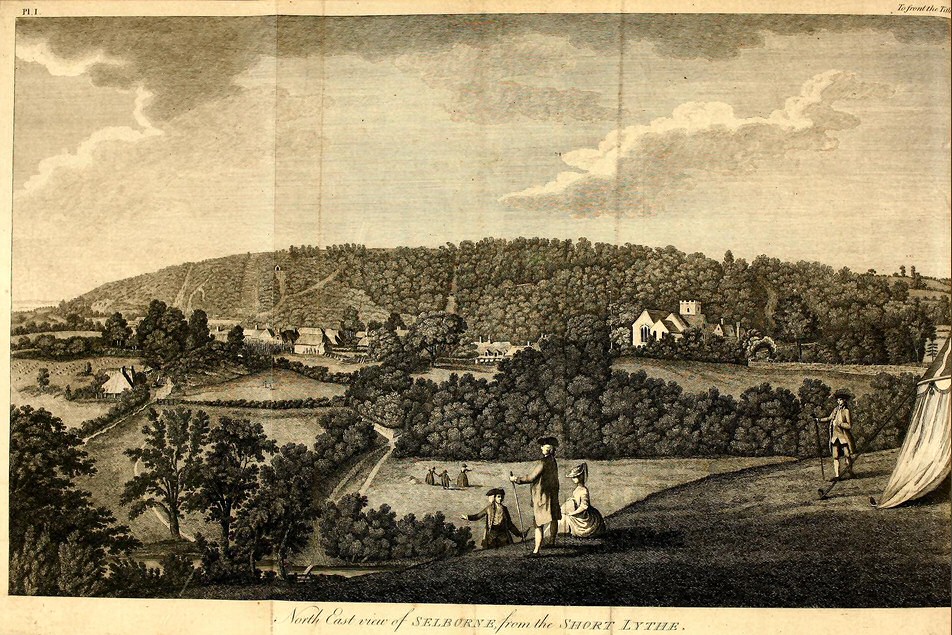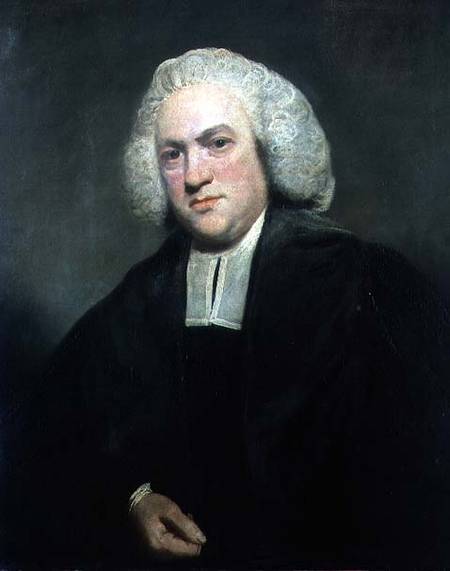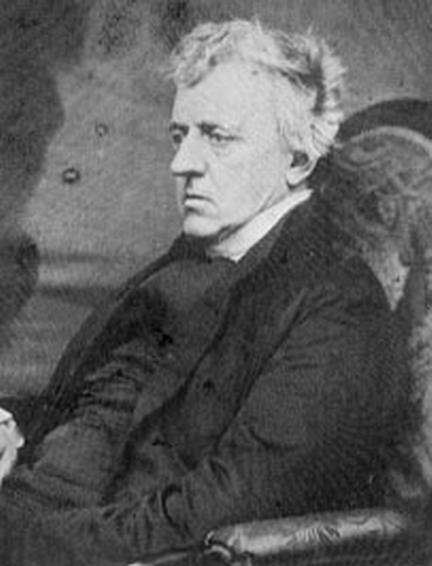|
Gilbert White
Gilbert White FRS (18 July 1720 – 26 June 1793) was a " parson-naturalist", a pioneering English naturalist, ecologist, and ornithologist. He is best known for his ''Natural History and Antiquities of Selborne''. Life White was born on 18 July 1720 in his grandfather's vicarage at Selborne in Hampshire. His grandfather, also Gilbert White was at that time vicar of Selborne. Gilbert White's parents were John White (1688–1758) a trained barrister and Anne Holt (d. 1740). Gilbert was the eldest of eight surviving siblings, Thomas (b. 1724), Benjamin (b. 1725), Rebecca (b. 1726), John (b. 1727), Francis (b. 1728/29), Anne (b. 1731), and Henry (b. 1733). Gilbert's family lived briefly at Compton, Surrey, before moving into 'The Wakes' in 1728, that was to be his home for the rest of his long life. Gilbert White was educated in Basingstoke by Thomas Warton, father of Joseph Warton and Thomas Warton, who would have been Gilbert's school fellows. There are also suggestion ... [...More Info...] [...Related Items...] OR: [Wikipedia] [Google] [Baidu] |
Selborne
Selborne is a village in Hampshire, England, south of Alton, Hampshire, Alton, and just within the northern boundary of the South Downs National Park. The village receives visitors because of its links with the naturalist Revd. Gilbert White, a pioneer of birdwatching. The village St Mary the Virgin is a Grade I listed church that dates back to the late 12th century. There is a primary school, and a Village Stores & Post Office (currently closed and For Sale). Furthermore, there is one public house the "Selborne Arms". A bus service that runs through the village links it to Alton, Hampshire, Alton and Petersfield. At the back of the village, behind the Selborne Arms and Gilbert White's Field Studies Centre, there is the ''Zig-Zag Path'', which was cut into the hillside in the 1760s by Gilbert White and his brother John, to provide easier access to the Hanger and Selborne Common on the summit of Selborne Hill. A complete history of Selborne, from its geology through its estab ... [...More Info...] [...Related Items...] OR: [Wikipedia] [Google] [Baidu] |
Natural History Of Selborne
''The Natural History and Antiquities of Selborne'', or just ''The Natural History of Selborne'' is a book by English parson-naturalist Gilbert White (1720–1793). It was first published in 1789 by his brother Benjamin. It has been continuously in print since then, with nearly 300 editions up to 2007. The book was published late in White's life, compiled from a mixture of his letters to other naturalists—Thomas Pennant and Daines Barrington; a 'Naturalist's Calendar' (in the second edition) comparing phenology observations made by White and William Markwick of the first appearances in the year of different animals and plants; and observations of natural history organized more or less systematically by species and group. A second volume, less often reprinted, covered the antiquities of Selborne. Some of the letters were never posted, and were written for the book. White's ''Natural History'' was at once well received by contemporary critics and the public, and continued to b ... [...More Info...] [...Related Items...] OR: [Wikipedia] [Google] [Baidu] |
Natural History And Antiquities Of Selborne
''The Natural History and Antiquities of Selborne'', or just ''The Natural History of Selborne'' is a book by English parson-naturalist Gilbert White (1720–1793). It was first published in 1789 by his brother Benjamin. It has been continuously in print since then, with nearly 300 editions up to 2007. The book was published late in White's life, compiled from a mixture of his letters to other naturalists—Thomas Pennant and Daines Barrington; a 'Naturalist's Calendar' (in the second edition) comparing phenology observations made by White and William Markwick of the first appearances in the year of different animals and plants; and observations of natural history organized more or less systematically by species and group. A second volume, less often reprinted, covered the antiquities of Selborne. Some of the letters were never posted, and were written for the book. White's ''Natural History'' was at once well received by contemporary critics and the public, and continued t ... [...More Info...] [...Related Items...] OR: [Wikipedia] [Google] [Baidu] |
Joseph Warton
Joseph Warton (April 1722 – 23 February 1800) was an English academic and literary critic. He was born in Dunsfold, Surrey, England, but his family soon moved to Hampshire, where his father, the Reverend Thomas Warton, became vicar of Basingstoke. There, a few years later, Joseph's sister Jane, also a writer, and his younger brother, the more famous Thomas Warton, were born. Their father later became an Oxford professor. Joseph was educated at Winchester College and at Oriel College, Oxford, and followed his father into the church, becoming curate of Winslade in 1748. In 1754, he was instituted as rector at The Church of All Saints, Tunworth. In his early days Joseph wrote poetry, of which the most notable piece is ''The Enthusiast'' (1744), an early precursor of Romanticism. In 1755, he returned to his old school to teach, and from 1766 to 1793 was its headmaster, presiding over a period of bad discipline and idleness, provoking three mutinies by the boys. His car ... [...More Info...] [...Related Items...] OR: [Wikipedia] [Google] [Baidu] |
Magdalen College, Oxford
Magdalen College (, ) is a constituent college of the University of Oxford. It was founded in 1458 by William of Waynflete. Today, it is the fourth wealthiest college, with a financial endowment of £332.1 million as of 2019 and one of the strongest academically, setting the record for the highest Norrington Score in 2010 and topping the table twice since then. It is home to several of the university's distinguished chairs, including the Agnelli-Serena Professorship, the Sherardian Professorship, and the four Waynflete Professorships. The large, square Magdalen Tower is an Oxford landmark, and it is a tradition, dating to the days of Henry VII, that the college choir sings from the top of it at 6 a.m. on May Morning. The college stands next to the River Cherwell and the University of Oxford Botanic Garden. Within its grounds are a deer park and Addison's Walk. History Foundation Magdalen College was founded in 1458 by William of Waynflete, Bishop of Winchester a ... [...More Info...] [...Related Items...] OR: [Wikipedia] [Google] [Baidu] |
Northamptonshire
Northamptonshire (; abbreviated Northants.) is a county in the East Midlands of England. In 2015, it had a population of 723,000. The county is administered by two unitary authorities: North Northamptonshire and West Northamptonshire. It is known as "The Rose of the Shires". Covering an area of 2,364 square kilometres (913 sq mi), Northamptonshire is landlocked between eight other counties: Warwickshire to the west, Leicestershire and Rutland to the north, Cambridgeshire to the east, Bedfordshire to the south-east, Buckinghamshire to the south, Oxfordshire to the south-west and Lincolnshire to the north-east – England's shortest administrative county boundary at 20 yards (19 metres). Northamptonshire is the southernmost county in the East Midlands. Apart from the county town of Northampton, other major population centres include Kettering, Corby, Wellingborough, Rushden and Daventry. Northamptonshire's county flower is the cowslip. The Soke of Peterborough fal ... [...More Info...] [...Related Items...] OR: [Wikipedia] [Google] [Baidu] |
Moreton Pinkney
Moreton Pinkney is a village and civil parish in West Northamptonshire, about north of Brackley. The 2011 Census recorded the parish's population as 371. The villages name means 'Moor farm/settlement'. It was held by the family of Pinchengi from 1199. In the 13th century, it was known as Geldenmortone, from Old English 'gylden' meaning, 'golden', probably because of its especial wealth. Manor In the reign of Edward the Confessor one Leuric held the manor of Moreton "freely", ''i.e.'' without a feudal overlord. He was dispossessed after the Norman Conquest of England and the Domesday Book of 1086 records that one Geoffrey held the manor of Gilo, brother of Ansculf de Picquigny. In the 12th century Henry de Pinkeny ''(sic)'' held the manor. In both surveys the manor was assessed at one and a half hides. Parish church The earliest evidence of Christianity in the parish is a fragment of an Anglo-Saxon stone cross in the churchyard of the Church of England parish church of St ... [...More Info...] [...Related Items...] OR: [Wikipedia] [Google] [Baidu] |
Perpetual Curate
Perpetual curate was a class of resident parish priest or incumbent curate within the United Church of England and Ireland (name of the combined Anglican churches of England and Ireland from 1800 to 1871). The term is found in common use mainly during the first half of the 19th century. The legal status of perpetual curate originated as an administrative anomaly in the 16th century. Unlike ancient rectories and vicarages, perpetual curacies were supported by a cash stipend, usually maintained by an endowment fund, and had no ancient right to income from tithe or glebe. In the 19th century, when large numbers of new churches and parochial units were needed in England and Wales politically and administratively, it proved much more acceptable to elevate former chapelries to parish status, or create ecclesiastical districts with new churches within ancient parishes, than to divide existing vicarages and rectories. Under the legislation introduced to facilitate this, the parish priest ... [...More Info...] [...Related Items...] OR: [Wikipedia] [Google] [Baidu] |
.jpg)




